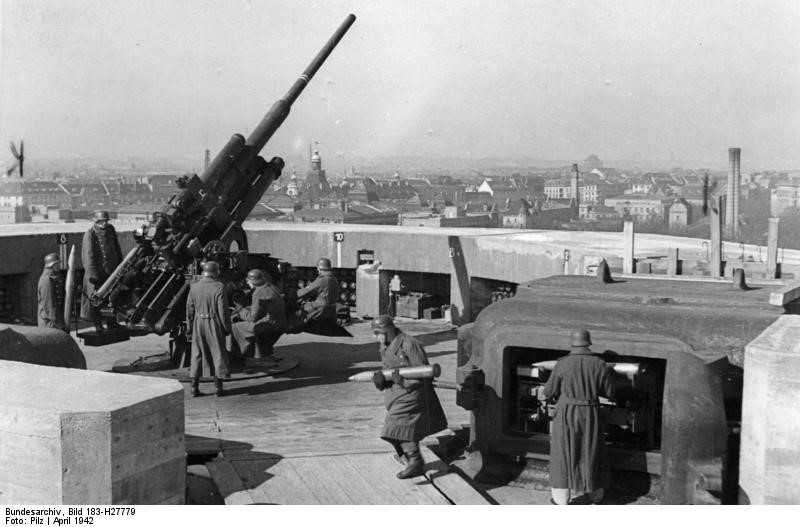
| Year | June 1937 |
| Weapon Type | Heavy Anti-Aircraft Gun |
| Origin & Designer | Germany/Rheinmetall |
| Numbers Produced | 3.980 |
| Crew | 10 |
| Calibre | 105mm (105x769) |
| Elevation | -3° to +85° |
| Traverse | 360° |
| Breech | Horizontal Semi-Automatic Sliding Block |
| Recoil | Hydropneumatic |
| Gun Sight | [@gun_sight] |
| Gun Mount | Turntable Cruciform Platform |
| Carriage | 2 x Sd.Anh.203 |
| Trailers | [@trailers] |
| Gun Shield | [@gun_shield] |
| Armoured Plate | [@armoured_plate] |
| Barrel Length | 5.547mm (L/63) |
| Overall Length | 8.42m |
| Width | 2.45m |
| Height | 2.90m |
| Weight | Weight in Traction: 12.519 kg Weight in Action: 8.890 kg |
| Round Weight | 26 kg (HE) 26.10 kg (AP) |
| Muzzle Velocity | 880 m/s (HE) 860 m/s (AP) |
| Feed | [@feed] |
| Magazine Capacity | [@magazine_capacity] |
| Practical Rate of Fire | 10 r.p.m. |
| Rate of Fire | [@rate_of_fire] |
| Maximum Rate of Fire | 15 r.p.m. |
| Maximum Ceiling | 12.800m |
| Maximum Ground Range | 17.700m |
| Maximum Range | [@maximum_range] |
| Armour Penetration | 140mm @ 500m @ 30° |
| Traction | Motorised (Sd.Kfz 8) |
| Variants | Flak 39: New five piece barrel and electrics |
| Notes | The Flak 38 was initially designed as a heavy anti-aircraft gun for use in the field. But due to their weight and slow deployment time, they were relegated as static weapons. They were similar in design to the 88mm flak but were obviously larger. They served mainly on German soil as emplaced guns. |